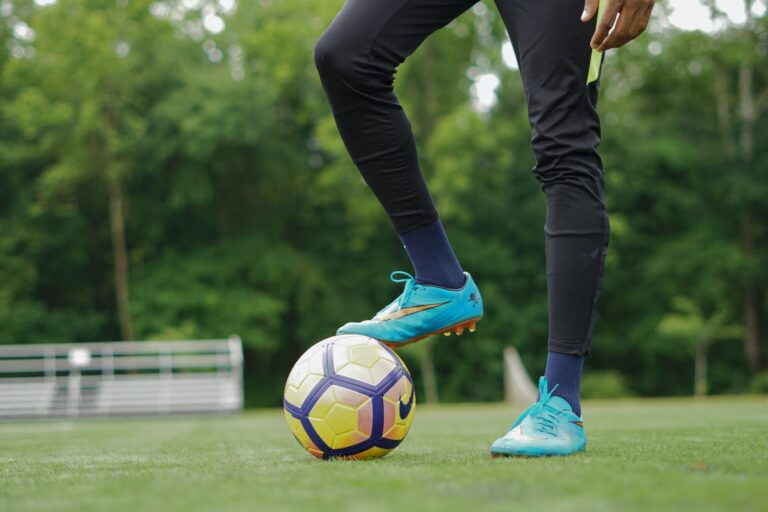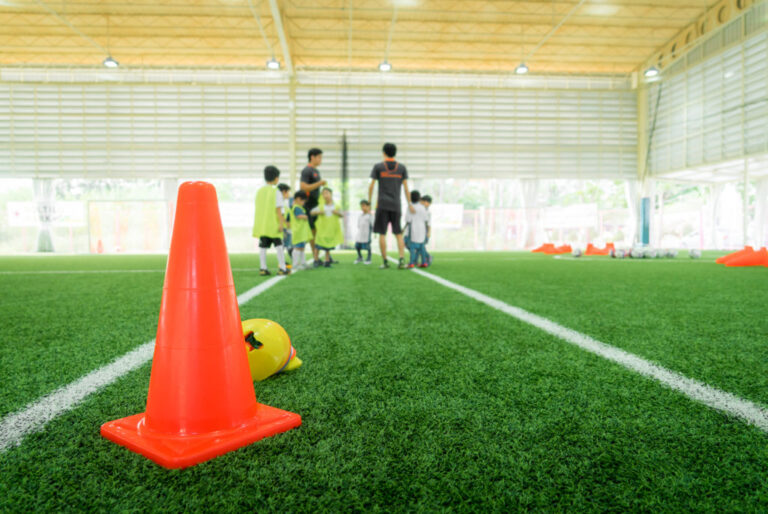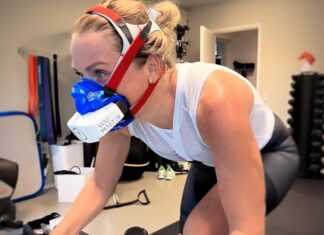Why not take your football to the next level, whether you’re playing for the love of the game, to enhance your fitness, or to develop your skills? In a 90-minute game, the typical professional player currently travels over 10 kilometers. Now that the demands of the game have grown so dramatically, it’s more important than ever to be larger, stronger, and more explosive.
A warm-up isn’t the only thing you can do to enhance your game and fitness. You can invest in football training equipment that will be useful to sharpen your skills. Anytime Sports Supply is a great place to find sports training equipment and gear. With that, here are our top seven football training tactics that you should keep in mind.
Contents
1. Every day, including running and jogging into your workout program.

Repeatedly run for four minutes at a moderate pace and four minutes at a brisk pace. In addition to sprinting, include some footwork that comes into your routine. Get on a treadmill or select a running area that is suitable for your needs.
2. Include sprinting training in your workouts.
Five sets of 50-meter-long sled pull, or bungee cord pulls, with a 30-second break between each set. Sprint speed used to be a winger-only attribute, but it’s now essential for players at all positions. Even recent greats like Rio Ferdinand will admit how difficult it may be without it towards the conclusion of their careers. Using weighted sled pulls, and parachute sprints can help you push your legs to their limits, allowing you to run faster for shorter bursts than the rest of the pack. With isometric and eccentric motions performed under greater pressure, you may quickly develop speed merchant-like strength in your hamstrings and quads.
3. In football, explosiveness is an essential quality.

Lift the box higher each week while you do your sets of 10 single-leg box leaps on each side. Superstars like Eden Hazard seem to turn a corner and be in the midst of next week, but most of it comes down to strenuous effort. Explosive power is the key to success in this game.
It’s not for the squeamish and requires a lot of work, but the payoff is enormous, making you a lethal number 10 with a terrifying turn of speed. For this, practice plyometric movements such as burpees with tuck jump burpee burpees and any jump-based squat, including plyometric box jump.
4. Improved mobility
Do as I tell you: Do 10-20 zig-zags, increasing your pace each time, with your foot propelling the ball through the whole process. There is nothing wrong with being quick, but you’ll be limited to the wings if your speed is limited to a straight line. Players must be able to change direction at any moment, without risk of injury, and always have the ball in their possession at all times. It is easy to improve agility by using cone workouts like the slalom or the shuttle. However, be aware that if you lose control of your ball while sprinting and turning, you’ll be eliminated from the game.
5. Add Drills to Your Workouts

This will help you improve your game, technique, and warm-up before the game by creating exercises for each of these areas. The more you practice and work with your team, the better you will become. If you want to become better at football training, try some of these exercises.
Dribbling
Dribbling exercises are an excellent method to warm up before a game. A wonderful approach to enhancing your coordination and getting your mind into the game is by dribbling drills around your teammates, whether you use cones or obstacles. These activities will help you maintain the ball under control, which will aid you in the next competition. Remember to keep the ball within striking distance and walk with a modest stride.
Shooting
The best approach to be ready for a game is to practice shooting from various positions and in multiple situations. Many different shooting situations need you to know how to fire while you’re moving. Your best shooting position may be determined by practicing each of these positions. To simulate what can happen in a game, put pressure on your teammates.
Crossing
The crossing is essential in a high-stress football match. You must pass the ball to your teammate and produce beautiful crosses to prevent your opponents from intercepting it. Specially vital for wingers, who will be responsible for a large portion of the pitch’s movement and decision-making, is this warm-up. When you’re on the field, think of ways to help your teammates score goals—practice high-stress scenarios with your colleagues. Warm-up and drill sprints from one side of the field to the other are essential for all players, especially for wingers who will sprint up and down the field for much of the game.
Turning
Having a few practice runs under your belt is essential. There are several ways to help you maintain the ball for longer, fend off your opponents, and score more goals. You and your position need to find the best possible turns. Make sure you do your homework, practice, and ask for advice from other players. Cruyff turn, fake turn, and clipping the ball are all options that you may use to your advantage to safeguard the ball.
Tackling
Having the ability to get the ball back when your side loses is crucial to your success. Tackling is an essential skill that must be mastered in a safe, fast, and professional way. Don’t forget to work on your slide, block, and poke tackles. Practicing tackling with teammates is a great way to get a feel for real-world circumstances. To tackle is to change the ball’s trajectory and buy your team time, even if it doesn’t always result in regaining control.
Heading
In football, sometimes you have to think on your feet. Aiming for the ball or stopping a goal isn’t only a mental exercise. When it comes to heading the ball, practice is essential. Catch, head, and throw the ball without it hitting the ground in three-person teams. This will make you think about when you need to head the ball, how to avoid dropping it, and how to keep the drill moving.
Passing
In football, passing may be a little bit of an art form. As a group, working on something together may have a significant impact on gameplay. Perform short and lengthy passes, in addition to lateral movement with your feet. Your timing and judgment will improve greatly as a result. Quickly kicking the ball back and forth to each other can improve your decision-making skills and teach you not to hold onto the ball for too long. Your team’s ability to maintain possession and score goals will improve if you pass the ball more rapidly.
















